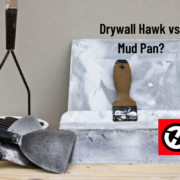Automatic taping tools have revolutionized the wall-finishing industry over the last few decades. As these tools gain more features (and moving parts), it becomes more important to maintain them properly, especially when they require such a significant financial investment to obtain them. To maximize your tool’s life, it is important to clean, lubricate, and store your tools properly.
There are a lot of videos and articles on how to maintain automatic tapers, and some of it can be a bit confusing. We know you are too busy to sort through all the information to figure out what is right, so we decided to go straight to the tool’s source to find out the best tips for making your investment last. We went to the biggest drywall toolmakers for their practical tips for cleaning, maintaining, and storing your taping tools to ensure they last longer and perform better.
Cleaning Tips From Columbia Taping Tools
The best way to clean the Columbia Automatic Taper is with a hose right after the job. Empty any mud out of the taper into a bucket and then remove the cap and spray out any mud that is inside, make sure to spray anywhere you see mud left over on the body as well. Use an oil spray (we recommend Fluid Film but you can use WD40), silicone spray or M-1 and lubricate all the moving parts, chains, wheels, and bushings. For a deeper clean you can also use a dish brush for getting into all the corners. If you can’t wash it right after the job, we suggest wrapping the head in a plastic bag so that the mud does not dry up, until you are able to clean it.
Lubrication Tips From Tapepro Drywall Tools
Our Tapepro Automatic Taper is relatively unique in that you can easily remove the taper head for cleaning and maintenance.
At the end of your workday, remove the head and place in a bucket of water. With the head removed, spray inside and outside the tube with water and use a soft scrub brush to remove any joint compound remaining on the outer parts. Clean the head by removing the cover plate and spray the inside with water until all traces of the joint compound have been removed, using a soft brush to clean any tough spots. The removable head allows you to ensure a thorough cleaning of all moving parts.
Once your taper is clean and dry, it is important to lubricate the chain, rubber gaskets, and other moving parts. Some manufacturers recommend bazooka oil for all parts, however we recommend three different lubes for maximum life of your taper parts.
For metal/metal contact: Use a light machine oil – A solvent-based oil, like WD-40 is not the best lube for automatic tapers and tends to form a thicker residue that can gum up the taper components. This is the same reason bicycle manufacturers don’t recommend it. Sewing machine oil or an oil with similar viscosity, like the Blue Line 365, would be best.
For anything synthetic (piston seal, rollers, seals, nyliners): Use a wet silicone lube – We use Wurth brand silicone spray because it has good body and lubricity. Avoid those lubricants with too much propellent or penetrative substances.
For Disconnect Lever: Use a waterproof grease – If you disassemble the head for maintenance, you need to use a waterproof grease (lithium grease, for example) between the disconnect lever (ATA036) and drive axle (AT035), and also between the drive axle (AT035) and cable drum (AT023S) so you can disassemble them later.
Storage Tips For Your Taper
Most automatic taping tools are large and awkwardly shaped, which can make storing them between jobs a challenge. Many tool manufacturers offer automatic taping tools sets that often include a storage case for your tools. But, you don’t always buy the set, and as you accumulate more tools, you find yourself needing the case.
The good news is that some taping tool manufacturers will sell the storage cases, separately. Automatic tapers have moving parts that can get caught, damaged, or misaligned if they aren’t stored carefully, so having a storage case can be just as important as properly maintaining the tools. If your taper manufacturer doesn’t sell a separate storage case, you can likely find a similarly-sized one from another manufacturer. While you can’t usually swap out different brands of taper parts, storage cases are not usually proprietary, so using another brand’s case shouldn’t cause you any headaches.
Wall Tools has the largest selection of wall-finishing and wallcovering tools, and all the parts and supplies you need to replace them.



